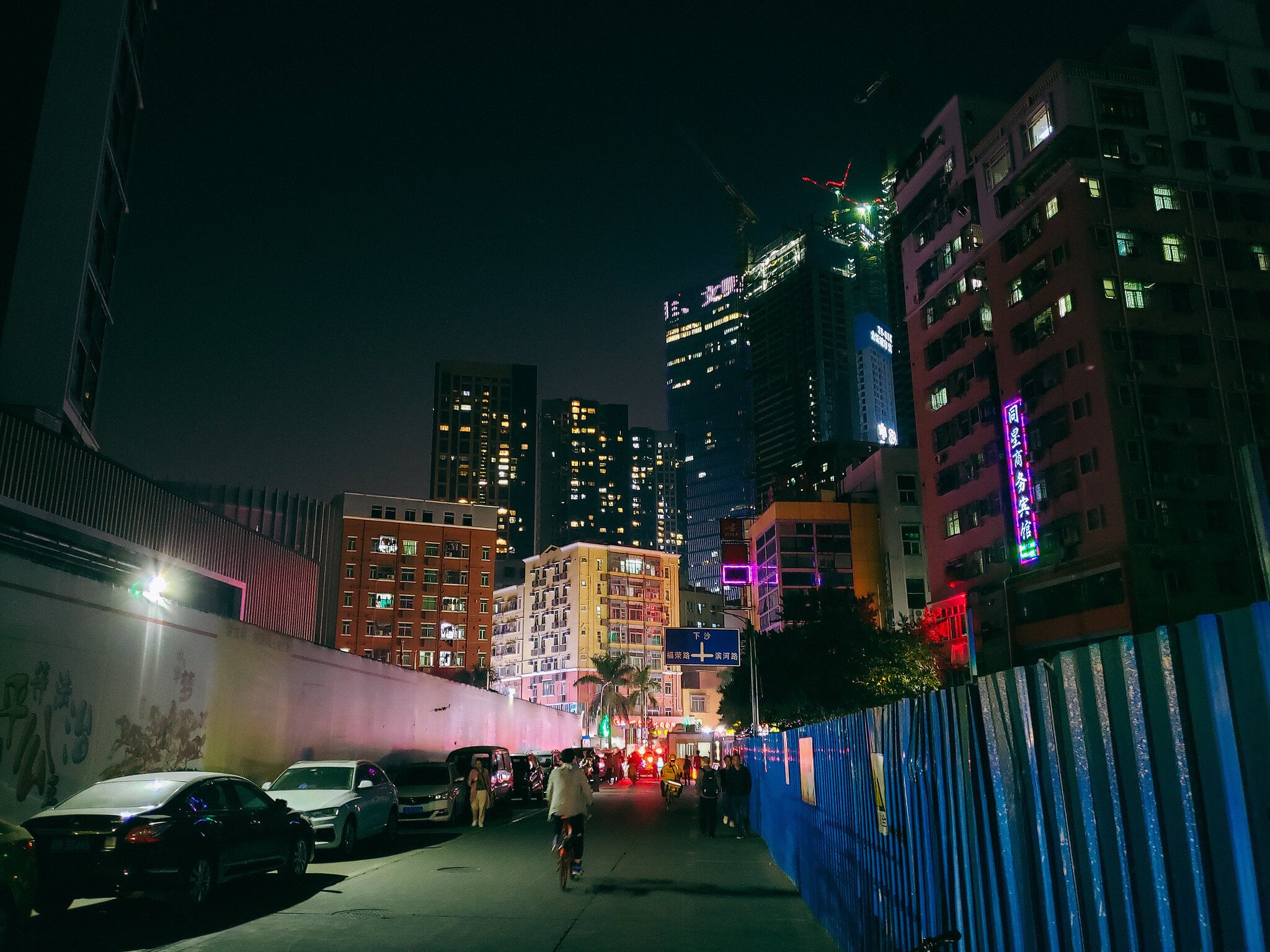Shenzhen's Urban VIllages
This narrative on Shenzhen’s urban villages was cut from the Lonely Planet book I wrote in 2021, so thought I’d stick it here for posterity.
Urban villages (城中村; chéngzhōngcūn), a social and geographical by-product of rapid urbanization, have come to define what makes Shenzhen so unique. Since no cities in history have developed as quickly as Shenzhen, these communities are a new phenomenon, much studied by anthropologists and urban planners.
Literally meaning ‘village in the city’, chéngzhōngcūn are the architectural opposite of Shenzhen’s broad, centrally-planned avenues, breezy parks and uncluttered urban core. Cheaply constructed, multi-storey apartment blocks in pre-fab pastel colours are known as ‘handshake buildings’ (握手楼; wòshǒu lóu) because they’re built so close together it’s joked that neighbours can shake each other’s hands from opposite windows. The streets below, often too narrow for cars, clogged with washing lines and dripping air conditioning units, are home to businesses providing affordable goods and services to residents – the city’s army of migrant workers.
Densely populated, largely unregulated by city planners and often lacking in infrastructure, it’s no wonder some consider urban villages to be the city’s slums. However, academics believe that they have been instrumental in Shenzhen’s rise, providing a vital source of affordable housing for the migrant workers upon whose cheap labour the city’s prosperity has been built. They’re also vibrant, dynamic, and self-sufficient social communities, providing shops, schools, restaurants, hairdressers and a sense of belonging for their transient inhabitants.
Countryside Origins
Although urban villages are a recent phenomenon, the original settlements upon which they took root (and share a name) are often hundreds of years old. Before modern Shenzhen was mapped out as a Special Economic Zone, it was Bao’an County, a tapestry of rural villages surrounded by farmland. The government took over the agricultural land for urban development, but land use and management rights in the villages were retained by the residents. Without fields to tend, village residents became landlords, building cheap, tall, tightly packed tenements on their individual village plots, and renting them to the workers pouring in from other provinces. This process has resulted in the unique urban patchwork of Shenzhen - islands of urban villages contained within gleaming plots of skyscrapers and modern development. These urban villages were operating outside Shenzhen’s masterplan, despite being very much inside the city .
An Uncertain Future
As Shenzhen’s land values soar, urban villages – or rather the land they are built on - grows ever more lucrative and desirable. In the last two decades, more than half of Shenzhen’s urban villages have disappeared. Deals are struck between property investors, the city government and village landowners, and the bulldozers roll in. Meanwhile, the village tenants are forced to find alternative accommodation outside the city, which often means new jobs and new school arrangements for their children.
A recent example is Baishizhou, an urban village that until 2019 was home to 150,000 residents benefiting from cheap rents and proximity to Shenzhen’s Software Park hi-tech zone. Vacant plots of cleared land as barren as the surface of the moon sit next to the last few clusters of ramshackle ‘handshake’ apartments awaiting the wrecking ball. Many of the 1800 or so village landowners are expected to become millionaires from the sale of their land to developers.
Increasingly, however, Shenzhen is working with private companies to upgrade urban villages rather than raze them and redevelop the land into offices and malls. More good news, although it may come too late for Shenzhen’s first generation of migrant workers, is that public housing is on the rise in the city, provided to tenants at about half of the going market rate. This is part of a new property plan put forward by the government in 2018 to increase its provision of housing for migrant workers and their families.
Three Urban Villages to Explore
Nantou (南头)
Nantou is an example of how the history of the original settlement can be preserved within the urban village that develops on it. Today a densely packed urban village, Nantou was for centuries the administrative seat of Bao’an County. It retains its original guildhall (renovated), an ancient well and two ancestral temples. It’s a disorienting experience to walk beneath the worn, Qing-dynasty era stone gate and be greeted by the distinctive ‘handshake buildings’ that characterise urban village architecture – two distant layers of history on top of one another.
Shazui (沙嘴)
Shazui is part of a strip of five urban villages in Futian district, along with Shatou, Shawei, Shangsha and Xiasha. Here you’ll find ‘handshake buildings’ over twelve storeys tall with impossibly narrow lanes between them that never see sunlight. You’ll also find vibrant communities with authentic Hong Kong-style diner restaurants and even the occasional hip café or craft beer bar. Take metro line 7 to Shawei or Shangsha stations to begin your wanderings.
Dafen (大芬)
Dafen is an example of how an urban village can carve out its own niche, in this case first as a centre of oil painting factory-style production, and more recently a gentrified art zone. The lanes in between Dafen’s handshake buildings are often lined with easels inviting tourists to have a go at oil painting. You’ll also find framing shops and shipping companies hard at work, part of the manufacturing infrastructure of this self-contained, commercial urban village community.

